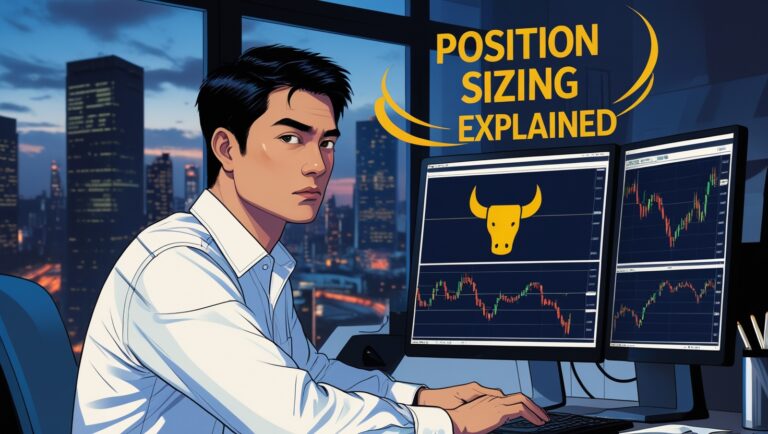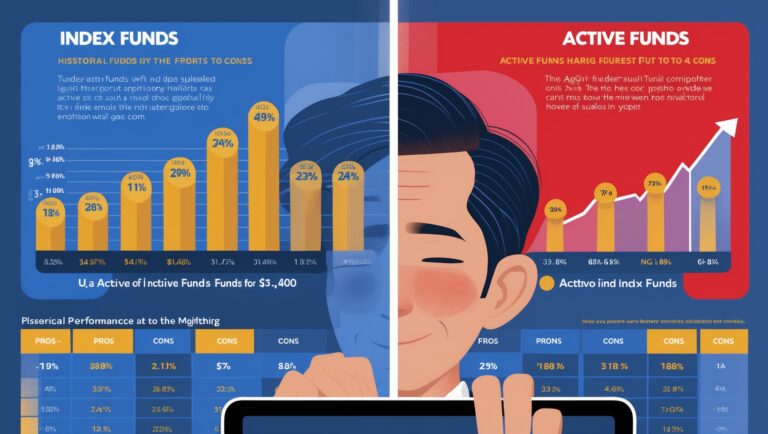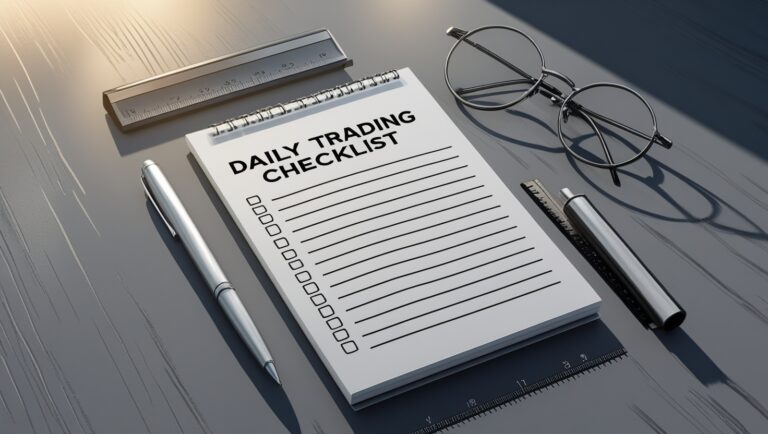How I Avoid FOMO and Still Catch the Best Setups
How I Avoid FOMO and Still Catch the Best Setups
When I started trading, I constantly felt like I was missing out. I’d see a stock fly up 30% in minutes, and my instinct was to jump in — even if I didn’t have a plan. That’s called FOMO (Fear of Missing Out), and it’s one of the biggest reasons I used to lose money.
Now? I’ve developed a system that helps me stay calm, patient, and focused, even when the market feels exciting. And ironically, by not chasing, I actually catch better trades.

Table of Contents
I Stick to My Watchlist — No Exceptions
The biggest shift I made was learning to trust the watchlist I built before the market opened. Every morning, I scan for stocks with volume, news, or gaps. If a stock isn’t on that list by 9:30 AM, I ignore it — no matter how much it moves.
This helps me eliminate distractions and focus on stocks I already understand, not random tickers that pop up out of nowhere.
FOMO Comes From Not Having a Plan
What I realized is that FOMO wasn’t the real problem — the lack of a solid plan was. When I didn’t know what I was looking for, everything seemed like a good trade. Now that I have a clear setup I look for, I can instantly tell if a chart fits or doesn’t.
This clarity removes the emotional reaction and replaces it with confidence.
I Focus on Clean Setups — Not Fast Movers
Fast doesn’t mean good. I’ve learned that just because a stock is moving doesn’t mean it’s tradable. I only act when I see a clean pullback, volume confirmation, and structure on the chart.
I’d rather miss a few runners than get caught in a pump-and-dump that wipes out my account.
I Journal My Emotions Too
Every day after the market closes, I take five minutes to write down how I felt during trades. If I felt rushed, anxious, or like I was forcing something — I note it. Over time, I started recognizing patterns. That self-awareness helped me eliminate FOMO-driven decisions from my routine.
Missing a Move Doesn’t Mean You Missed the Market
One of the biggest lies in trading is that if you miss this move, you won’t get another. That’s simply not true. Opportunities show up every single day. But great setups? Those come to the patient traders who are prepared.
I remind myself often: “There will always be another trade.”
I Use Volume as My Signal
If I do feel tempted to chase, I immediately check the volume and price action. Is it extended? Did it already make the move? Is there an actual setup forming, or is it just hype?
These quick questions help me slow down and re-center. Most of the time, I realize I’m chasing — and that’s my cue to wait.
I Learned to Love the Waiting Game
One of the most powerful things I do now is wait. Sometimes I wait all morning for one perfect setup. Sometimes, I don’t trade at all. But when my setup finally comes, I’m ready — and that patience usually leads to a much higher-quality entry.
I Trade for Income — Not for Thrills
At the end of the day, I trade to pay my bills, not to entertain myself. That mindset alone has helped me avoid FOMO. I’m not here to gamble or chase excitement. I’m here to make disciplined decisions that produce real results.
This Is Exactly What I Teach in My Ebook
If you want to learn how I avoid FOMO, pick high-quality trades, and stay consistent even with a small account, I break it all down in my ebook. It’s the same process I use every day — and it’s helped me go from confused and break-even… to consistent and profitable.
👉 Grab your copy here – How I Pay My Bills With Simple Stock Setups
Final Thoughts
Avoiding FOMO isn’t about ignoring the market — it’s about training your mind and system to recognize what matters. I don’t catch every move anymore — but I catch the right ones. And that’s what actually grows an account.
Another thing I do is remind myself of past trades I forced and lost. I keep screenshots of my biggest FOMO trades that went south. Every time I feel the urge to chase something I didn’t plan for, I look at those charts. It keeps me grounded.
Consistency beats urgency — every time. I realized that trading is like a sport. It’s not about one lucky shot. It’s about showing up every day with discipline and control. That mindset helps me win the long game.
I also use price levels and structure, not emotions, to guide my entries. If I miss a breakout but the stock pulls back to a clean level later, I’m ready. That way I’m not just reacting — I’m executing based on my setup.
There’s a big difference between a setup and a spike. I trade setups. I don’t trade hype. That’s a rule I follow now without exceptions.
My morning routine is key to avoiding FOMO. I take time before the bell to prepare mentally and review my notes. That focus helps me ignore random alerts and stick to my watchlist — even when Twitter or Discord is going crazy.
Another major shift was realizing I don’t need to trade every day. I used to think missing one day meant I wasn’t growing. Now I know better. Some days, sitting on your hands is the most profitable move.
I use free tools and my own trading journal to stay sharp. Every day, I reflect on what worked and what didn’t. If I chased something or felt emotional, I write it down. That simple habit has made me more accountable.
I also categorize my wins. Was it a setup I planned or a random trade? If I win from a random trade, I don’t celebrate it. That trade could have gone either way. I only give weight to wins that followed my strategy.
Most people don’t talk about emotional discipline, but for me, that’s the core of profitable trading. I don’t need a hundred tickers or a dozen indicators. I just need clarity, structure, and calm.
If you’re still struggling with chasing and confusion, my ebook is for you. I explain exactly how I trade with a small account, how I prepare, and how I avoid getting sucked into noise. You can get it here:
👉 How I Pay My Bills With Simple Stock Setups
Trading doesn’t have to be complicated. You don’t have to follow everyone else. You just need a system, a plan, and control. Once I got those three things in place, FOMO stopped controlling my trades.
If I can do it, you can too. Stay patient. Stay focused. And remember: you don’t need to catch everything — just the right ones.

Stay ahead in the stock market! Subscribe to our newsletter and receive exclusive stock flow reports, trading insights, and actionable tips directly in your inbox. Join thousands of traders who get our updates first.







